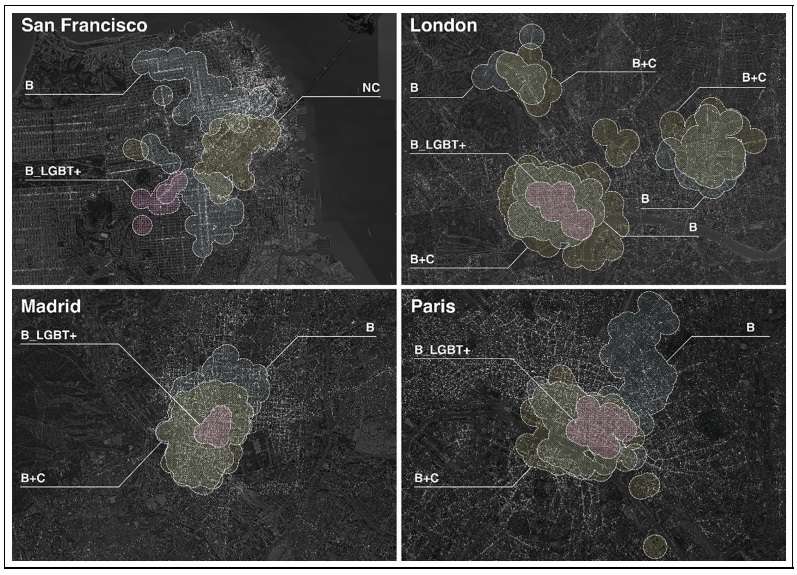Nuevo artículo: Castro, Soho, Chueca, Le Marais. An international approach to queer urban spaces of symbolic capital accumulation
tGIS y HafenCity Universität Hamburg publican un estudio sobre como el BigData ayuda a entender la identidad urbana de los espacios LGBTQ+ de varias ciudades
29 jul 2024 - 13:04 CET
Autores: José Carpio-Pinedo y Jesús López-Baeza
Resumen / Abstract
LGBTQ+ neighbourhoods and venues in our cities have fulfilled many vital functions for LGBTQ+ people and for society as a whole. Generally identified through the concentration of consumption spaces that host meetings between LGBTQ+ people, they have a great symbolic value in the fight for their rights and against intolerance. At a time when doubts arise about their future, there are far fewer spatial, quantitative and systematic analyses of these concentration patterns, especially from an international and comparative approach to the phenomenon. The digitisation of our daily lives generates big data that make possible avenues of research that were hitherto impossible, not only in detail and extent, but also in the nature of the questions to answer. In this article, we analyse Foursquare location-based social big data to quantify and spatialise clustering patterns of queer places and symbolic capital in four LGBTQ+ neighbourhoods (Castro in San Francisco, Soho in London, Chueca in Madrid and Le Marais in Paris) and take similar spaces with no LGBTQ+ identity as a reference. In doing so, the greater accumulation of symbolic capital in LGBTQ+ spaces is revealed and measured in these four cities. In future, similar studies could capture trends like the gentrification of these environments, to help policymakers make data-driven decisions to promote more inclusive and diverse cities.
Enlace: https://journals.sagepub.com/doi/full/10.1177/00420980241256821
¿Cómo citarlo? Carpio-Pinedo, J., and López-Baeza, J. (2024). Castro, Soho, Chueca, Le Marais. An international approach to queer urban spaces of symbolic capital accumulation. Urban Studies. https://doi.org/10.1177/00420980241256821

